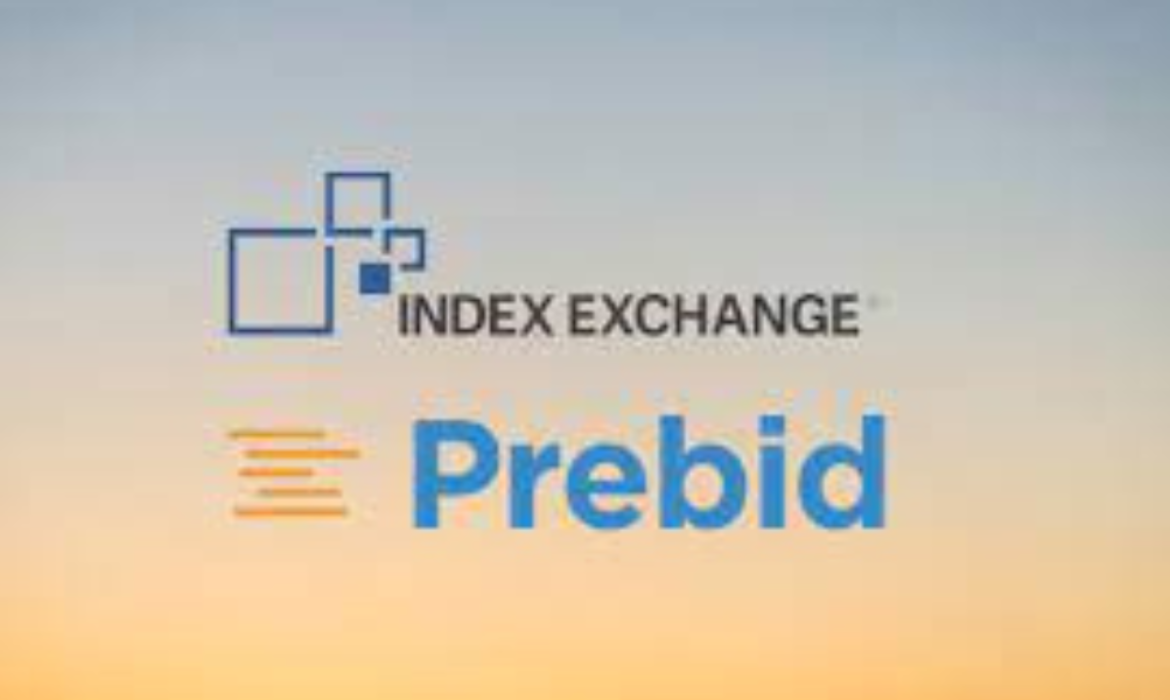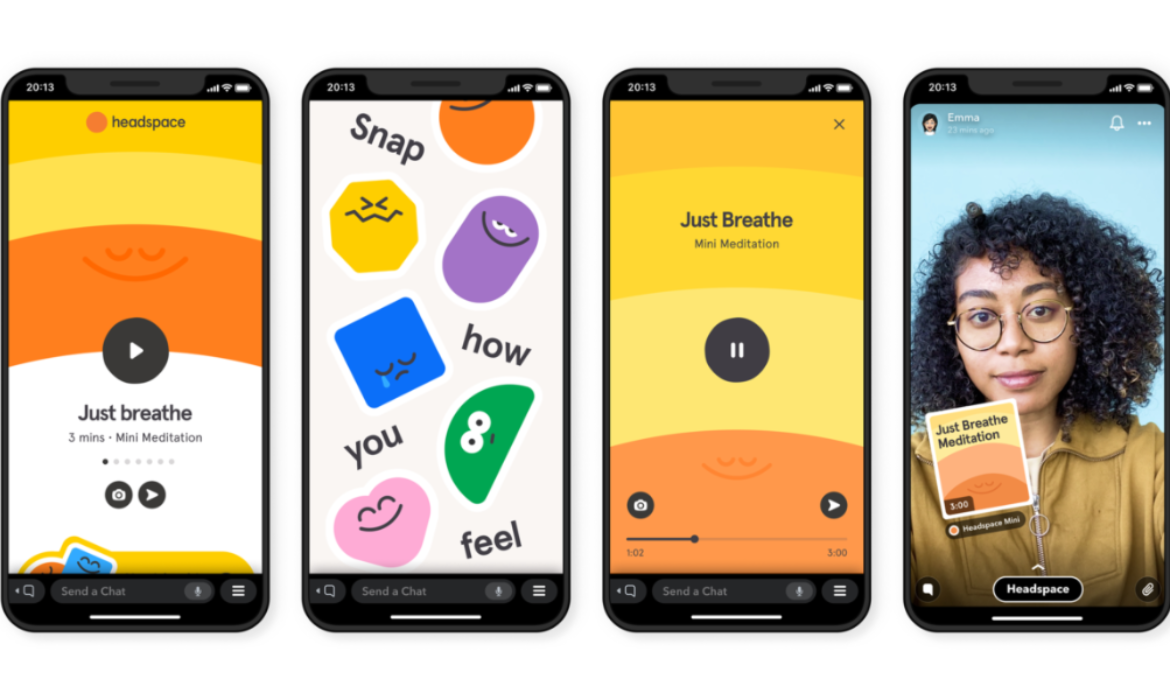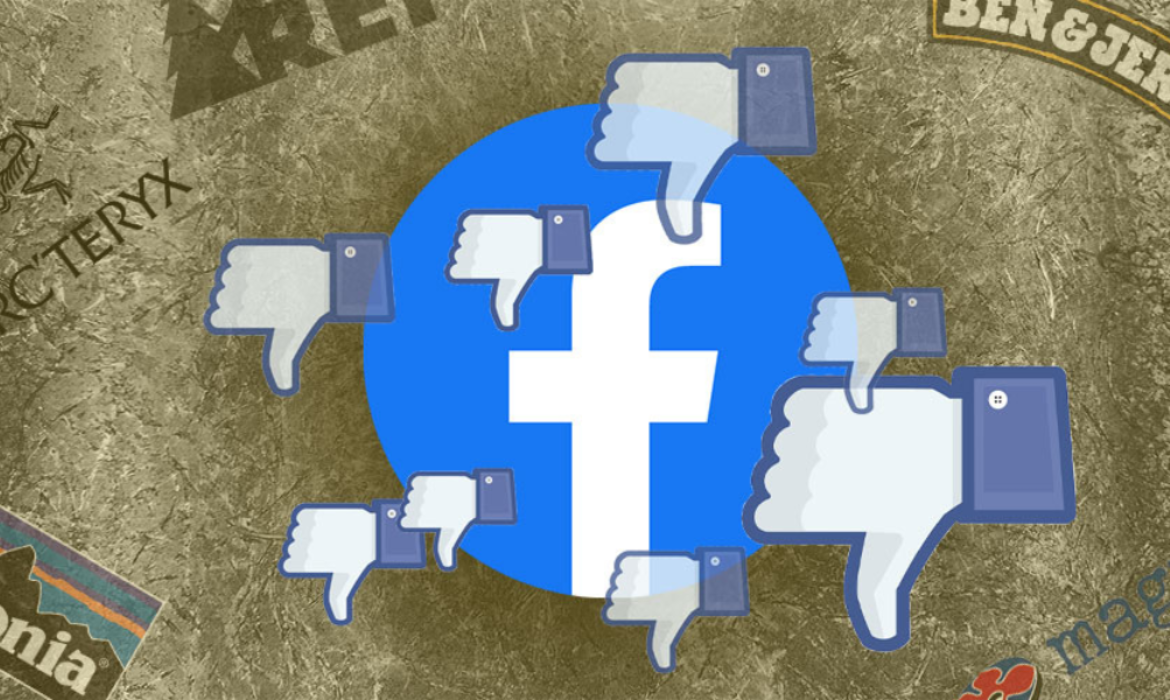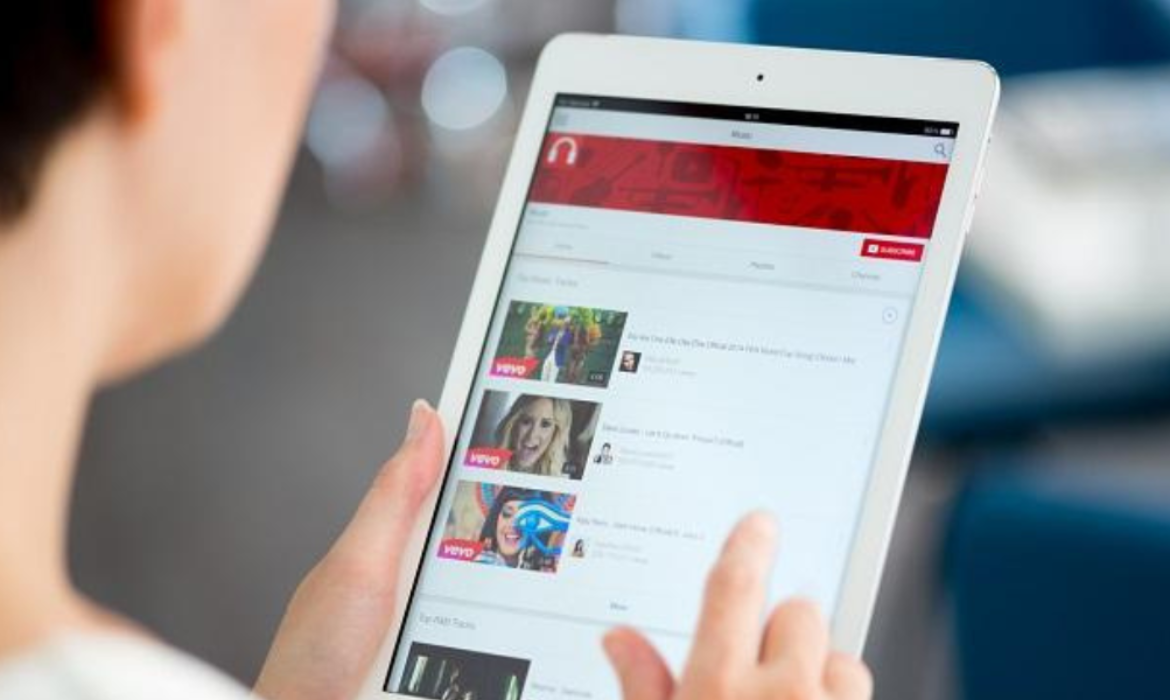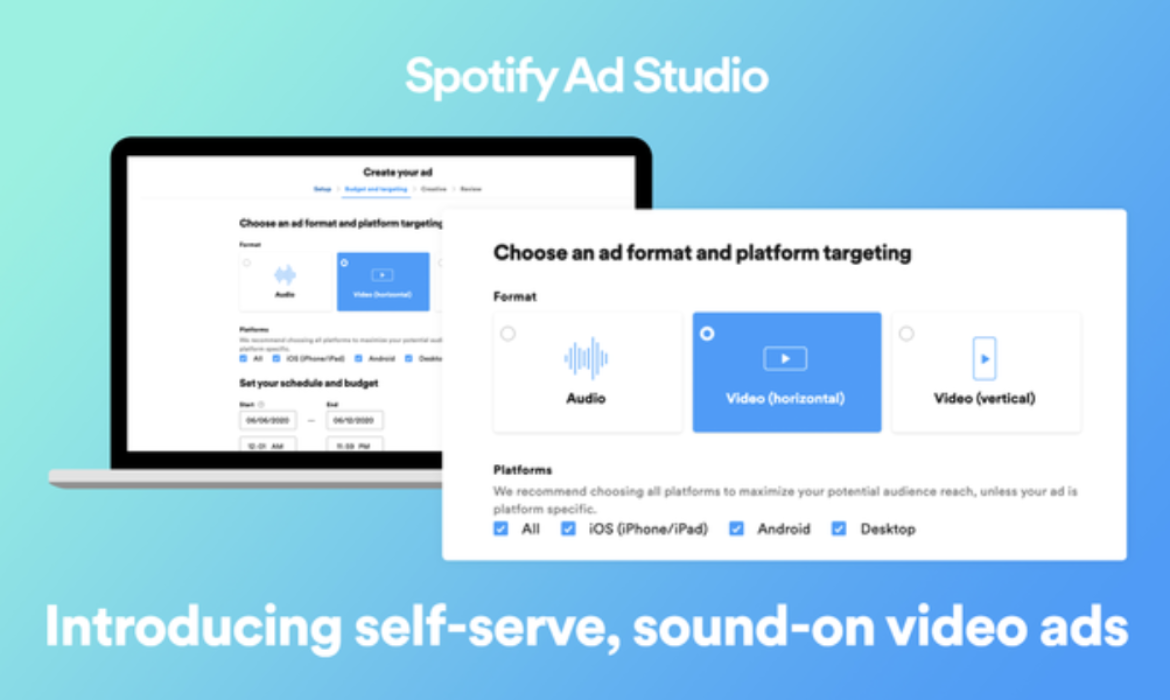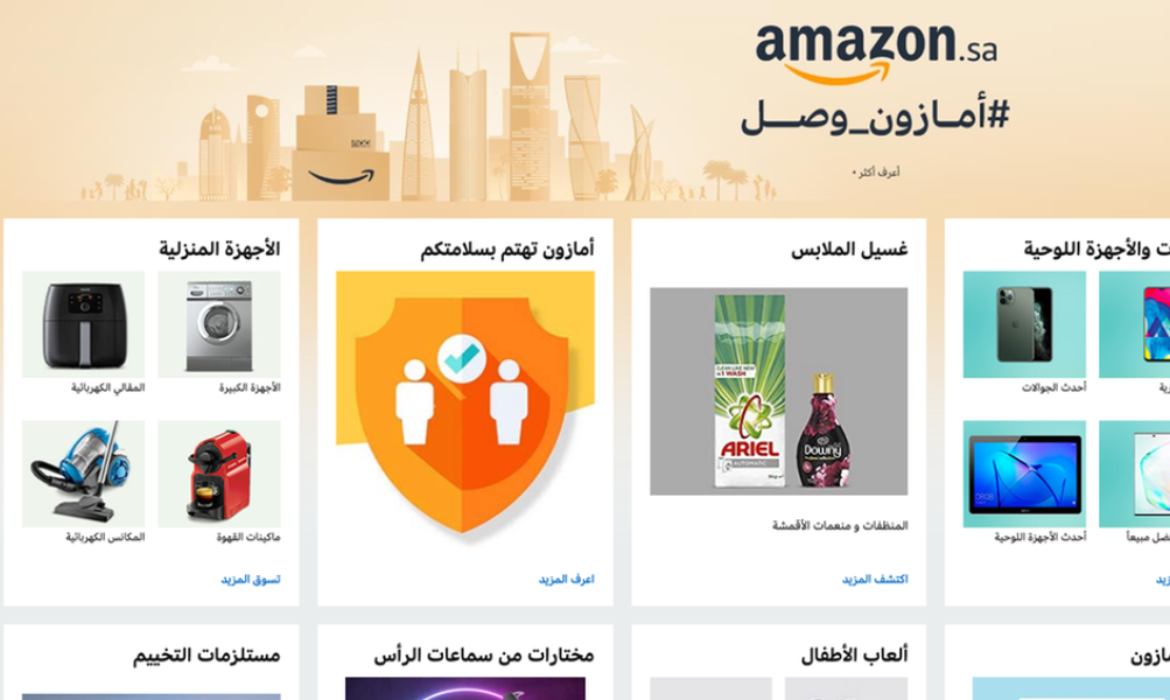Index Exchange Joins Hands with Prebid.Org to Deal with Industry Crisis
Prebid.org an organization that manages open source Prebid programmatic advertising solution announced that Index exchange (IX), one of the highly known supply-side platforms has joined them at the leader level. Mike O’Sullivan, Vice President of Product at IX has also joined the board.
Independent adtech firms are struggling to monetize the open web. As the regulations increase and third party cookies decline, the advertising ecosystem continues to face challenges in searching for new ways to track and monetize users on the open web. This reinforces the need for industry leaders to come together to build a collaborative solution otherwise there are high chances of intense competition from the duopoly like Google and Facebook.
Mike O’Sullivan said in a statement,
“The industry has very little time to solve for what’s to come after the third-party cookie, and we know collaboration is going to be an essential element of our path forward.”
“In addition to solving the third-party cookie challenge, publishers are increasingly trying to monetize in an omnichannel world, and with that comes complexity. Prebid.org is an excellent forum to discuss, design, and standardize potential solutions with a wide variety of stakeholders.”
Prebid.org is an industry-wide supported initiative to promote the fair, transparent, and efficient unified auction. Participating members contribute to the open-source projects like Prebid.js, Prebid Server, and Prebid Mobile. Index Exchange will be joining the Prebid.org team of 55 member companies that include CafeMedia, Magnite, MediaMath, OpenX, PubMatic, SpotX, StreamAMP, The Trade Desk, and Xandr.
Tom Levesque, President of Prebid.org said,
“We’re very excited to have Index Exchange join Prebid.org. The community is looking forward to their contributions and leadership across the ecosystem.”
“IX’s participation solidifies Prebid.org’s role as the best place for publishers, SSPs, DSPs, and buyers to create the future of the unified auction.”
Adtech companies are collaborating together to find a solution to third-party cookies after Google announced turning web trackers from Chrome by 2022. and recently, Index Exchange took Live Ramp cookieless identity products globally in an effort to connect publishers and advertisers.
Read More: LiveIntent and Rubicon Project Invest on a Non-Cookie Based Identifier
Unruly Extends Partnership with Double Verify for a Brand-Safe Environment
Unruly, a video adtech company announced the expansion of its brand protection solution to advertisers through a global partnership with Double Verify, a leading digital software platform for media measurement, data, and analytics.

Earlier this year, Unruly’s partnership with Double Verify was extended to the U.S., is now being rolled out across multiple markets worldwide, including the U.K.
What Is The Deal About:
As a part of the deal, Double Verify’s fraud-filtering solution will be implemented pre-bid across Unruly’s omnichannel marketplace UnrulyX will ensure that all brands and ad agencies’ ads are delivered in a brand-safe environment irrespective of the device or formats. Unruly X has access to more than 2,700 direct publishers globally.
Fraud activity is increasing in Connected TV. Recently, Double Verify provided its fraud-filtering solutions to Connected TV (CTV) and tracked a 120% increase in fraudulent CTV and mobile apps — with over 500,000 fraudulent CTV devices detected per day.
The two-year partnership also covers Unruly’s sister brand Tremor Video, a leading programmatic video, and advanced TV platform. Double Verify is the verification partner for of all Tremor’s international activity. Unruly is also the founding member of WFA’s Global Alliance for Responsible Media which works with the world’s biggest advertisers and agencies to institutionalize cross-industry standards and approaches towards brand safety.
Unruly’s brand safety solution, UnrulyX Shield is industry-recognized and certified by DAA and TAG.
What They Have To Say:
Steven Woolway, EVP of business development, DoubleVerify said,
“Unruly has distinguished itself as one of the true innovators in the advertising technology space. I applaud the measures they have taken to create a high-quality marketplace, and I’m proud of the role that DV plays in ensuring inventory is fraud-free.”
Hilary Goldsmith, Unruly’s chief customer officer said,
“DoubleVerify’s proven reputation among our clients, coupled with its comprehensive CTV fraud filtering solution, gives us confidence that this partnership will provide brands with the safest environment for reaching and engaging consumers.”
Read more: Much Noise About Customer Data Platform, But Why?
Minis Are Here, Miniature Third-Party Apps In Snapchat
Snapchat Minis, bite-sized third party-apps built within Snapchat rolled out on Monday. Snapchat first previewed Minis, a lightweight, built on HTML at the 2020 Partner Summit back last month.
Four out of seven Minis debuts across the platform. These mini-apps are going live:
Meditation tool Headspace, studying collaboration tool by Tembo, an interactive messaging tool Prediction Master and Let’s do it, a mini-app by Snap.
Other minis apps -festival trip planning by Coachella, Atom’s movie ticketing, and student’s schedule planner Saturn are yet to go live.
The Easiest Way To Meditate Is With Headspace Mini
Headspace mini is a part of the initiative “to help support the mental health and emotional wellbeing of SnapChatters, said a Snap spokesperson.
Why it matters
The user base of Snapchat is one of the youngest on the social. Media as it reaches more under 30 years old who are coping up with missed schools, job loss, and socialization in the pandemic.
Details
Users can access minis within the chat and can also check-in the sessions with friends. Users can choose from the six meditation sessions of three-four minutes. According to research conducted by Snapchat, late last year reveals that young audience consults friends first about mental health issues over parents. This new tool is even more crucial at present as it will help users (especially the young audience) to deal with a range of mental challenges in the pandemic. A Headspace spokesperson said in an email to The Verge,
“By putting these useful resources front and center where friends already meet and share, we believe Snapchat can play a unique role in empowering friends to help each other through difficult times.”

Image Credit: Hindustan Times Tech
Will It Replicate WeChat Success?
Even though it’s a new and fresh concept in the U.K and the U.S, this mini-App model is famous in Asian Markets. For instance, Tencent’s WeChat has over 1 million mini-app programs that allow users to perform various tasks. Also, mobile payment services Paytm and PhonePe in India has rolled out several services like flight booking, movie tickets, or ordering a cab.
Snapchat has said previously that Tencent, an investor app in L.A influenced it to replicate the WeChat-style super app. It is a win-win situation for both parties-Snapchat and developers who are making the mini-apps. Snapchat can boost user engagement and developers can access a whole new set of audiences. Facebook, last month, had a little success over replication of the WeChat model through chatbots on Messengers.
Now, it remains to be seen, what is the audience response to the mini-app model as Snapchat gains inroads to the U.S, U.K, and other markets.
Your Ultimate Guide to Understanding the Customer Data Platform
There is a lot of buzz about CDP- Customer Data Platform. It is a type of database software that streamlines customer data across martech stack and create a unified, persistent record of customers accessible from other systems. As per the Research and Markets report, the global Customer Data Platform (CDP) market size is expected to grow from USD 2.4billion in 2020 to USD 10.3billion by 2025 with a startling CAGR of 34.0% during the forecast period.

Image Credit: MarcTech Today
The major growth factors of CDP markets are being driven by the proliferation of devices and customer touchpoints, customers’ real-time personalization expectations, and navigation of privacy policies and regulations. Let’s comprehend each factor in detail:
-
Multiple Devices, Fragmented Touchpoints, and New Soaring Expectations
Gartner estimates an average U.S adult will have more than six devices by 2020 including smart TVs and wearables. Consumer expectations will also rise for recognition and relevance.
The Cisco Annual Report forecasts the number of devices connected to IP networks will be more than three times the global population by 2023. Globally, devices and connections are growing faster at 10 percent CAGR. The average number of devices and connections per capita will grow from 2.4 in 2018 to 3.6 by 2023.

Image Credit: Cisco
Several of these devices are being used by customers in a day to interact with the companies they are doing business with and expect these brands to recognize them irrespective of the device used by them at the given time.
Salesforce State of the Connected Customer survey conducted in 2019 reveals customer journeys are nonlinear and fragmented across touchpoints.
78% of customers prefer different channels for communication with brands depending on context and 64% of customers expect tailored engagements based on past interactions.
71% of customers expect companies to communicate with them in real-time.

Image Credit: Salesforce State of the Connected Customer Report of 8000 B2B and B2C buyers

Image Credit: Salesforce State of the Connected Customer Report of 8000 B2B and B2C buyers
-
Privacy Policies
The data security and governance of the consumers is of the utmost importance for the marketer and is a front runner in their concerns. The data regulations body continues to grow to name a few – GDPR (General Data Protection Regulation), CCPA (California Consumer Privacy Act), and CASL (Canada Anti-Spam Legislation).
High expectations along with the escalation of customer touchpoints make cross-device ID’s – the ability to integrate different sets of data collected at various touchpoints into a single profile of a customer that will help the marketers, sales personnel, and service professionals.
As reported in Martech Today, CDP vendors are SOC (Service Organization Control), SSAE (Statement on Standards for Attestation Engagements), and/or ISO (International Standards Organization) certified. They help marketers to address privacy challenges with robust data governance protocols to ensure compliance with rules and data security standards.
Learn more: Identity Resolution Platforms Helps Marketers Tackle Consumer Data Crisis.
Your Ultimate Guide to Understanding Gaming Advertising
Of the wide economic disruption caused by the pandemic, the global gaming industry is thriving. With people sheltering at home, gaming is surging. Nielsen survey reveals that 82% of global consumers played video games and watched video game content.
The global video game market is estimated to be worth $159 billion in 2020. However, marketers are facing a distinctive challenge of activating in an environment different from traditional media. Recently concluded weeklong NewsFronts presentation discussed marketers’ approach towards the growing gaming and esports industry.

Image Credit: Newzoo
Esports has gained momentum due to the tech-savvy and digitally-advanced millennials. Currently, it is very popular and is the new epicenter.
How To Activate And Maximize Brand Visibility?
Gaming is a fragmented market. Marketers can approach in different ways to tap into the competitive industry by partnering with influencers, buying on platforms, or directly going to gaming publishers.
As per Adweek reports, Douglas Veney, influencer and esports marketing manager at Nestlé, said they have partnered with influencers to drive engagement with fans.
“We can really take it from the influencer level and then build upon that approach to move into … more platform level things that are a little bit deeper down the funnel for that.”
Contradictory, the Hershey company finds influencer marketing space is highly crowded and is hard to attract attention. Another challenge for the company is to find a cost-effective strategy to run an always-on campaign in the gaming space since a similar gaming audience can be found on YouTube at a lower cost.
Another interesting case to study is on Horizon Media’s Scout Sports and Entertainment group partnered with esports team FaZe Clan who helped Burger King introduce its new plant-based burger to a young audience with its three-step approach.
The holistic three-step approach – a YouTube taste-test video, followed by a Fortnite live stream where Burger King discounts were offered, and a meet-and-greet at a local Burger King restaurant.
Nico Amantia, senior account executive at Scout Sports and Entertainment told Adweek,
“That holistic, three-pronged activation allowed us to spread awareness digitally, but also have that face-to-face interaction with fans and really give them something back, which really allowed us to have a very successful campaign.”
Understand Its Implication:
One thing is clear that gaming and esports are an upward trend with a massive audience reach. According to eMarketer, 2020 U.S. gaming ad revenues are expected to reach $3.67 billion, and esports ad revenues are estimated to reach $214 million.
Although it is watched in a TV-like environment, it cannot expect the same response from a 15 min pre-rolled ads in the gaming world. David Messinger, CMO of Activision Blizzard quoted in Adweek,
“The major mistake that people make is to take the assumptions about other forms of media and try to take it into the world of gaming,”
Marketers should look to a long-term transformation -take time, approach things properly, and build on the bets to reap the benefits as gaming and esports ads are still in the nascent stage.
Messinger further added,
“Someone who comes in and starts today may feel like they’re behind, but they’re really at the beginning of what the future is going to be.”
Read More: Mobile Gaming Industry Bank On People Locked Inside Homes Due To COVID-19.
Unilever to Follow Other Brands in Boycotting Facebook Advertising
Highlights:
- A growing number of brands are joining the protest #StopHateForProfit, a month-long boycott of Facebook Advertising initiated by civil rights groups in response to social media giant’s handling of hate speech and misinformation.
- More than 90 marketers have joined the protest and Unilever is the latest to join the list who has paused brand advertising on Facebook, Instagram, and Twitter in the U.S. for the rest of the year.
- Facebook and Twitter shares plunged more than 7% after Unilever’s announcement.
What started as a slow protest by advertisers pulling ads from Facebook has turned into a growing boycott of the social media platform over its weak stance on hate and misinformation. Facebook shares fell more than 7% after Unilever, one of the world’s largest advertisers, joined other brands to boycott ads on social media. Unilever will no more spend on Facebook properties for advertising this year.
Mark Zuckerberg loses $7 billion after a flurry of companies pulled advertising from Facebook. The Guardian has described it as Facebook’s “largest-ever advertiser boycott”.

Image Credit: Stop Hate For Profit.org
Background:
The campaign ‘Stop Hate For Profit’ is organized by many advocacy groups including the Anti-defamation league, NAACP, Colors of change to name a few. The campaign calls on all businesses to stop advertising on Facebook for July and demand that it tighten their content policies against hate speech and racism. It also calls for businesses to hit its main source of income- advertising, as it made $70 billion last year that accounts for nearly 99% of its total revenue.
Why It Matters:
The boycott has damaged Facebook’s reputation, and increased political pressure ahead of the election, however, it would make an insignificant difference on its bottom line given the size of the company.
Driving The News:
Here are brands that have committed to cease their Facebook spending and for a certain timeline.
– Unilever, for the rest of the year
Unilever is the latest advertiser to join the bandwagon to boycott ads on Facebook and Facebook-owned platform Instagram. It is also the first to extend the boycott to the rival platform Twitter. According to Pathmatics, an ad tracking firm, Unilever was 33rd biggest advertiser on Facebook spending over $2 million in the first three weeks of June alone. The company said in a statement,
“Continuing to advertise on these platforms at this time would not add value to people and society.”
– Verizon, through July month
The company told CNBC that it will pull out ads from all the Facebook services on June 25.
– Levi Strauss & Co., through at least end of July
The denim clothing company said June 26 in a statement,
“We want to see meaningful progress toward ending the amplification of misinformation and hate speech and better addressing of political advertisements and content that contributes to voter suppression.”
– American Honda, through July
The U.S auto brand said it would stop paid advertising for July on Facebook and Instagram. A spokesperson from the company said it will post organically on both platforms during this time. It also said, “This is in alignment with our company’s values, which are grounded in human respect.”
– Arc’teryx, through at least July
The Canadian clothing brand joining the campaign tweeted, “Facebook profits ‘will never be worth promoting hate, bigotry, racism, antisemitism & violence.’
We need a break @facebook. Effective immediately, we will be halting our global advertising with @Facebook & @Instagram until at least the end of July in support of the #stophateforprofit campaign & donating those dollars towards building more inclusive outdoors.
— Arc'teryx (@Arcteryx) June 23, 2020
– Ben & Jerry’s, through at least July
The company in support of the campaign tweeted that Facebook must take clear and unequivocal actions.
We will pause all paid advertising on Facebook and Instagram in the US in support of the #StopHateForProfit campaign. Facebook, Inc. must take the clear and unequivocal actions to stop its platform from being used to spread and amplify racism and hate. >>>https://t.co/7OpxtcbDGg pic.twitter.com/I989Uk9V3h
— Ben & Jerry's (@benandjerrys) June 23, 2020
– Diageo, beginning July 1
Spirits giant said on June 27 that it will pause paid advertising globally on all major social media platforms including Facebook, Instagram, and Twitter beginning July 1.
Diageo statement on social media advertising pause. pic.twitter.com/kRIsdFjgzk
— Diageo News (@Diageo_News) June 27, 2020
– Birchbox, through July month
The makeup company said in an Instagram post on June 26 that they pause all paid advertisements in support of the campaign.
https://www.instagram.com/p/CB6F4UmDBNN/?utm_source=ig_embed
– Coca-Cola, through late July
Coca-Cola said in a statement that it plans to pause advertising on all social media platforms for at least 30 days while it revisits its advertising policies. James Quincey, chairman, and CEO said, “We also expect greater accountability and transparency from our social media partners.”
However, it’s decision is not a part of the campaign.
– JanSport, Habitat for Humanity through July month
The backpack producer tweeted on Jun 27 that it will stop advertising for the month of July “to join the fight for stricter policies that keep racist, violent & hateful content from proliferating on these platforms.”
The global non-profit also joined the campaign and paused all paid advertising on Facebook services for July month in a Twitter post.
– Hershey, through July month and 1/3rd for rest of the year
The Hershey Company in a statement to USA Today,
“We do not believe that Facebook is effectively managing violent and divisive speech on their platform. Despite repeated assertions by Facebook to take action, we have not seen meaningful change.”
It will halt advertising for July and cut spending by one-third for the rest of the year on Facebook and Instagram.
– Rakuten Viber, indefinitely
The messaging service said on June 25 that it is severing all ties with Facebook as a part of the growing boycott. Chief executive, Djamel Agaoua, said the move to cut ties was due to Facebook’s “poor judgment in understanding its role in today’s world”. It will remove all Facebook properties including Giphy, GIF library, Facebook Connect, and Facebook SDK.
– Magnolia Pictures, Patagonia through at least end of July
The Hollywood Studio said in a Twitter post on June 23, it has chosen to stop advertising on Instagram and Facebook through at least the end of July. The clothing brand Patagonia also announced on Twitter that it will join the campaign.
– The North Face, REI, Upwork, Eddie Bauer through July
The North face became the biggest and first brand to join the campaign.
We’re in. We’re Out @Facebook #StopHateForProfit
Learn more: https://t.co/uAT7u7mjBG https://t.co/jVxTIH5ThQ
— The North Face (@thenorthface) June 19, 2020
According to the running list by Sleeping giants, more than 100 advertisers have followed the suit.
Major luminaries of the ad industry have also started reviewing their ad spend and begun to pull their dollars.
– Unilever rival and largest advertiser in the country Procter and Gamble has also threatened to pull ads if platforms didn’t take ‘appropriate systematic action’ to address the hate speech.

Image Credit: CNBC
– According to the Wall Street Journal, 360i, a digital-ad agency owned by global ad holding group Dentsu Group Inc. emailed its client to join the Facebook ad boycott.
What Is Their Next Course Of Action:
Facebook is taking a more hands-on approach as ads boycott grows. It would start labeling political speech that violates the rules, take measures to prevent voter suppression, and protect minorities.
A post violating rules but is from an important political figure, it will be marked as ‘newsworthy’. Facebook said it would expand policies around hate speech and prohibit hateful language in ads on the site.
The Big Picture:
The boycott reached its tipping point with the Black Lives Matter protests when Facebook refused to moderate the post from President Trump that many believed incited hate and violence against protesters.
Next question, is the ad boycott huge to make a dent on Facebook revenue? The impact is limited. Analysts say that the boycott is for a limited period ‘July’ and then many of the advertisers plan to return their ad dollars to Facebook because of its effectiveness. Facebook’s auctioned based system can fill the ad space quickly with marketing messages from other companies.
Our Thought Bubble:
Facebook is powerful and experienced to deal with the current situation. The brand boycott is more of a PR problem than any immediate threat to its revenue.
Brands participation is noteworthy but it’s a tiny fraction of the 8 million advertisers using Facebook advertising and it would be hard to get a huge coalition to boycott the brand for an extended period.
Bottom Line:
It would be interesting to wait and watch how Facebook addresses the brand’s concerns in the coming weeks in response to the mounting political and social pressure and reverse the damage to its reputation.
Learn more: How Donald Trump’s Executive Order Has Changed the Face of Social Media
YouTube Tests New Shoppable Video Ads Tools
Amid a pandemic that created havoc around the world that resulted in prolonged store closures. This has led brands to advertise their products online to drive sales as more people are online now. To make things easier for them, YouTube has introduced new direct response solutions that make video ads more shoppable, drive conversion, and automate content delivery across the platform.
The idea is to make video ads the new ‘storefront’ for the brands as an increasing number of brands are using video ads that connect them directly to customers. YouTube Ads director and product manager Nicky Rettke wrote in the blog post, “Last year, the number of active advertisers using TrueView for action grew over 260 percent.”
Increase in sales with Shoppable TrueView for action
In the new test, the eCommerce advertisers can show their products in their TrueView for action ads. When the user clicks on the expansion arrow, browsable product imagery appears below the video.

Image Credit: Search Engine Land
The advertisers are required to sync their Google Merchant Center feed to the video ads, expand their call-to-action button, and drive traffic to a specific product page. However, Facebook recently released “Shops” creates on platform storefronts but keep the users and transactions within Facebook.
Retailer Aerie used Shoppable TrueView for action to increase awareness and sales for its 2020 Spring campaign and saw a 25% higher return on ad spend than the previous year and nine times more conversions compared to their traditional media mix. Rettke said in the post that 70% of people bought a brand after seeing it on YouTube.
Video Campaigns drive conversions
The next tool announced is ‘Video campaigns’, a cost-effective way to drive conversions, boost web traffic, or generate leads across the platform. It automatically brings video ads to the YouTube home feed, watch pages, and Google video partners in one campaign as well as include any future inventory that becomes available like the What to Watch Next feed.

Image Credit: Google
YouTube tested the video ad campaign with a start-up Mos to help students raise funds for college to avoid debts. Rettke said in the blog post that it saw 30% more purchases at one-third of the cost of its previous ad spend.
Lead Generation to a Video campaign
The third tool is adding lead forms to a brand’s video ad campaign. Lead forms help advertisers reduce costs and obtain potential costumers. It appears below the video ad and asks the viewers to fill the form while the ad is running.

Image Credit: Google
Automobile giant Jeep tested this approach with its Korea branch and saw a 13-times increase in completed leads at an 84% lower cost per lead as well as generated more leads.
Finally, Google has included YouTube in the Google Ads attribution report that will help advertisers identify the maximum impact across YouTube, Search, and Shopping campaigns.
Shoppable Ads, a new focus for social media platforms
Shoppable ads also considered as direct-response ads have become a major focus of all social media platforms in the pandemic when ad sales went down. Facebook introduced shoppable ads on its platform and Instagram. Snapchat has in-app shopping whereas buy groceries without leaving Pinterest. Shoppable ads are also seen on Tik Tok.
DR ads have helped Facebook, Instagram, Snapchat to maintain profits, and CPM’s. As per Adexchanger reports, YouTube sales VP Adam Stewart said,
“YouTube storefront isn’t a traditional DR advertising product.YouTube has a bustling DR business, because it’s popular for app-install campaigns, especially with mobile gaming companies.”
Direct response advertising features will be the focus of YouTube’s NewFronts presentation to advertisers. As a part of YouTube’s pitch, Stewart said the storefront isn’t meant to rival Facebook-Instagram or Snapchat commerce offerings but its natural counterpart is television.
Making Video Campaigns on Spotify Is Now Easy with Sound-On Video Ads!
Key Insights:
- The Ad studio debuted in 2017 and thereafter Spotify has nearly doubled its user base.
- Spotify witnessed an 11% rise globally in mobile downloads.
- Spotify reports an average of 25% of overall ad revenue from video accounts.
- In the past one year, Spotify has witnessed a 68% increase of active advertisers, with double the ads running.
Spotify has announced video advertising on Ad studio, its self-serve platform, in Canada, the U.K, and the U.S. This update is available to select advertisers in the recently added test markets to Ad Studio in April.
The Ad Studio was created initially for small and medium-sized advertisers to connect with Spotify listeners and create budget-friendly, customized audio ads for the platform. In April, it had expanded to 18 more markets and exited the beta version.
Spotify Push into Video Ads can increase brand awareness and brand recall.
Spotify said that often users on other platforms prefer viewing video ads muted, however, Spotify listeners are’ engaging with their sounds on.’ Complimenting their audio ad offering, video ads will give brands a visual storytelling opportunity for the in-focus moments.
The streaming giant further notes that running video ads with audio produces higher brand results than going solely for video ads. Video ads with sound-on lead to 1.9x ad recall and 2.2x increase in brand awareness, according to the company data.
The company said in a statement,
“Unlike many other platforms, on Spotify, listeners are already engaging with their sound on, offering a valuable opportunity for a brand’s message to be seen and heard. This multisensory experience can extend a brand’s audio ad strategy, providing another touchpoint to capture listeners’ attention and share messages across all relevant moments.”
Rise in advertisers using Spotify Ad Studio’s creative perk
Ad studio that is available in 22 countries globally has leveled up the playing field in creative production by offering a free service to generate a brand’s ad spot. Advertiser on Spotify’s Ad Studio can upload a script and in as little as one hour (48 hours in some cases) they will deliver a fully produced ad that includes music and voice over.
The company said that 37% of Ad Studio customers rely on their free voiceover tool for ad creation. Additionally, 50% of its advertisers used this tool in May, which is an 11% rise from March.
Ad Studio offers two options of ad format for video ads- horizontal video and vertical video. Horizontal video can run across all platforms and vertical video is optimized for iOS and Android.

Image Credit: Adweek

Image Credit: Adweek
Why should brands advertise on Spotify?
The company reported recently that it has 286 million active users and 130 million paid subscribers. Spotify is the third-largest advertiser in the world after Facebook and Google.
Spotify Ad Studio enables brands to reach targeted and relevant customers. Their programmatic audio advertising is the best way to reach Gen X and beyond.
If you think ads may annoy the listeners of Spotify, think again. Statistics by Acquisio states, 75% of digital audio listeners think commercials are totally fine on a free streaming service. 47% think ads are even less intrusive on Spotify than traditional radio.
For instance, brands targeting the hip audience that are interested in current trends can consider advertising on Spotify. Advertisers can take advantage of the Spotify data of logged users like moods, preferences, listening habits, interests, and activities. This will help brands to create customized ads.
Learn more: Spotify Adds $1.7B To Market Cap In 23 Min Post A Deal With Joe Rogan, World’s Leading Podcaster.
Amazon.sa is about to Replace Souq in Saudi Arabia
Highlights:
- Amazon.sa has been launched in Saudi Arabia replacing Souq.
- The eCommerce giant is operating three fulfillment centers and 11 delivery stations with a workforce of more than 1400 across Saudi Arabia.
- All existing Souq customer credentials, wish lists, delivery addresses, payment methods, and customer support queries have been converted to new Amazon.sa accounts.
- In the wake of the pandemic, eCommerce is booming in the Middle East and this online store brings Souk’s local know-how and Amazon’s global experience.
Amazon and Souq announced the launch of Amazon.sa in Saudi Arabia to replace Souq.com. This move came after a year after Amazon rebranded Souq to Amazon.ae in the UAE and 3 years after the e-commerce platform was acquired by Amazon in a deal worth $580 million (Dh 2.13billion).

Ronaldo Mouchawar, founder of Souq and now the Vice President of Amazon in the Middle East and North Africa commented on the launch, said,
“Today marks a key milestone … with Amazon.sa, we want to provide what customers have been asking us for the ability to shop a broader selection of both local products and international goods from Amazon.”
He further added,
“Partnering closely with our local and global sellers, we will continue to delight customers in Saudi Arabia by growing our product range while ensuring great prices, fast delivery, and a convenient and trusted shopping experience.”
Shoppers in Saudi can enjoy free next day deliveries on orders above Saudi Riyals 200(Dh196) or can opt for paid same-day delivery to the selected areas of the kingdom. However, Amazon Prime is not yet available on amazon.sa yet. Customers will be able to shop in Arabic or English on both the Amazon shopping app and website.
Shoppers can search for products and pay in local currency or credit/debit cards or opt for cash-on-delivery options and make installment payments from select Saudi banks.
Rafid bin Amin Fatani, Amazon’s head of public policy in Africa and the Middle East said,
“As we launch today, thousands of Saudi businesses use Amazon.sa to reach their customers and we look forward to growing this number further in the coming years.”
Expansion on cards
The Saudi eCommerce market is growing rapidly and is anticipated to surpass US$ 25 Billion by the end of the year 2026. Amazon is building a local logistics and operations network spreading across the kingdom. The company announced a new 226,00 square-foot Jeddah facility and Saudi women will make up approximately 40% of the workforce.
This partnership will encourage Saudi consumers to move further towards digital payments. Ziyad bin Bandar Al-Yousef, managing director of Saudi Payments said,
“This new partnership with Amazon will only serve to strengthen the kingdom’s digital transformation in the payments sector.”
Learn more: Adimo Joins Forces With FutureTech, To Create A True Commerce
LiveIntent and Rubicon Project Invest on a Non-Cookie Based Identifier
LiveIntent and Rubicon Project have agreed to help publishers and media to do business on a non-cookie-based identifier.
The idea is to bring the Liveintent Authenticated Bridge framework to the header to help marketers and publishers reap the benefits of the ecosystem. The framework will be delivered via the bidstream of the Rubicon Project. The Liveintent Authenticated Bridge – a unique, privacy-safe identifier known as nonID will connect advertisers to publishers using hashed email addresses – to support media buying and selling without dependence on third-party cookies.
The key to Liveintent’s addressability framework, Authenticated Bridge for publishers and marketers is powered by email. Additionally, it allows media traders to understand the primary email associated with the particular browser or device by connecting it to the first-party data signals.
Prior to the pandemic and civil rights protests, ad tech 2020 was looking for options to replace cookies after the largest internet browser Google Chrome announced a gradual phase-out of tech by 2022.
Google is yet to implement the planned updates like other web browsers. The market share of Google Chrome is almost 50% of all installed internet browsers which means it can have a huge impact on the industry and can lead to a closedown of many independent ad tech players.
In the interim, efforts are made to find a way forward for the $130 billion industry where online technologies are being monitored by privacy regulators. Liveintent powers marketing and advertising technology that is cross-device and cross-browser compatible and does not require the use of third-party cookies. CEO Matt Keiser described Authenticated Bridge solution as nonID which means open to all – anyone can adopt it. Liveintent works with around 2000 publishers and 1000 advertisers.
As reported in Adweek, Matt Keiser said,
So, we haven’t made it something you need to sign a contract in order to adopt. Additionally, our ID is 1:1 with an email address.
This means the days of closed solutions are over for publishers and brands as Liveintent does not encrypt its identifier per user, unlike other proprietary solutions. Publishers had to struggle to monetize the web traffic when Apple and Mozilla restricted third-party cookies. This is where the Bridge solution can help to offset such issues. Liveintent’s first-party solution is powered by its Identity Graph whose insights are directly connected with validated and active emails.
CEO Matt Keiser said,
This framework works with established vendors’ proprietary IDs but is also pen to any publisher or brand that has their own email data. LiveIntent and Rubicon Project believe in the power of open source technology and have built solutions designed for easy integration and adoption, all while adhering to data compliance.
Garrett McGrath, Vice President of Product Management, at Rubicon Project said,
We continue to work with industry partners to develop community-driven identity solutions that simplify and enhance the advertising experience for publishers, advertisers and consumers, all the while respecting data privacy. LiveIntent’s Authenticated Bridge framework provides an identity solution that is reliable, transparent, and streamlined.
He further added,
In addition to helping publishers make their inventory more accessible and useful to advertisers, people-based identifiers improve the end user’s digital media experience.
Meanwhile, many independent players like AT&T, Live Ramp, and the Trade Desk have built different IDs in the replacement of cookies and are eager to offer their offerings. Google has also built its own ID tech and solutions under Privacy Sandbox but the industry is calling for governance with rising concerns of continued dominance from the duopoly Google and Facebook.

